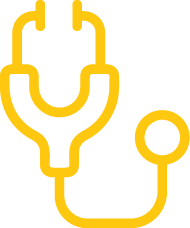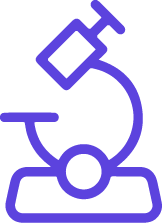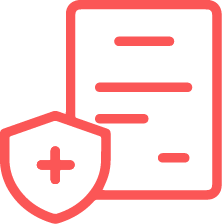The European Commission is revising Annex 11 of the EU GMP guidelines, and it’s about time. Annex 11 specifically governs computerized systems, making it a foundational document for how pharma companies implement, validate, and manage the tech that underpins everything from production to patient safety. In an era of AI, agile development, and cloud-native platforms, the old 2011 version was no longer fit for purpose.
The new draft isn’t just an update; it’s a full regulatory overhaul, set to reshape how pharma companies handle computerized systems, data integrity, and digital security. With the final version expected in summer 2026, now is the moment to assess the impact—and act.
In this blog, we’ll guide you through:
- The timeline of the Annex 11 revision
- Major structural and scope changes
- Key updates in AI, cybersecurity, data handling, and supplier oversight
- The practical implications for pharma companies
- How QbD can help you prepare
A Quick Timeline: Annex 11 Revision
The revision of Annex 11 follows a multi-stage consultation process. Here’s where we are now and what’s coming:
|
Milestone |
Date |
|
Concept paper released |
16 November 2022 |
|
Feedback deadline on concept |
16 November 2023 |
|
Draft of revised Annex 11 published |
7 July 2025 (planned) |
|
Public comment period closes |
7 October 2025 (planned) |
|
Final version expected |
Summer 2026 |
This staggered approach gives stakeholders across industry, government, and academia a window to review, react, and refine. For pharmaceutical companies, this timeline is both a countdown and a call to action.
What this means for you:
Now (2025 Q3–Q4) is the time to assess the draft’s impact on your quality systems, IT infrastructure, and validation strategies. Waiting until 2026 to act means you’ll likely face last-minute compliance scrambles, particularly around security, cloud systems, and audit trails.
By planning now and updating SOPs, revisiting risk assessments, and retraining personnel, you’ll be in a strong position to transition smoothly when the final version drops.
Expanded Scope and Structure: From 5 Sections to 17 Chapters
The revision transforms Annex 11 from a 5-section document into 17 chapters plus a glossary, expanding both depth and scope. Key changes include:
- Scope and Principles
- Pharmaceutical Quality System
- Risk Management
- Personnel and Training
- System Requirements
- Supplier and Service Management
- Alarms
- Qualification and Validation
- Handling of Data
- Identity and Access Management
- Audit Trails
- Electronic Signatures
- Periodic Review
- Security
- Backup
- Archiving
- Glossary
This restructuring doesn’t just offer more content; it introduces greater clarity, separating topics that were once grouped and giving each critical area its own defined space.
The addition of chapters like Periodic Review, Audit Trails, and Identity & Access Management shows how the EU is responding to current risks and compliance challenges.
Overall, the scope has shifted from compliance-as-validation to compliance-as-governance, a much more mature and scalable approach.
6 Critical Annex 11 Changes Pharma Must Prepare For
Now, let’s talk about the updates that will reshape how pharma companies must think about systems, suppliers, and security in a digitally-driven world.
1. Digital Transformation & Agile Methodologies
One of the most significant shifts is the Annex’s embrace of agile development and modern software lifecycle practices.
Whereas previous guidance leaned heavily on traditional, sequential validation (think waterfall), the new draft opens the door for iterative development and continuous improvement, as long as the process is controlled and documented.
This means:
- Risk-based validation can be applied incrementally across development cycles
- Integrated technical controls can reduce reliance on excessive procedural oversight
- QA and IT teams must now collaborate earlier and more often throughout the system lifecycle
2. Artificial Intelligence and Machine Learning
The revised Annex 11 is no longer treating AI as an emerging curiosity but a regulated capability, particularly when used in GMP-related manufacturing.
This update is reinforced by the parallel release of Annex 22, which covers:
- Model selection and training
- Algorithm validation
- Performance monitoring
- Change control for retrained models
- Human-in-the-loop decision safeguards
Together, these additions place AI and machine learning under the GMP compliance umbrella, meaning regulated companies must be able to explain and justify the behavior of their AI tools, from training data to real-time use.
3. Data Integrity & Audit Trails
If there’s one word that defines modern GMP, it’s traceability, and the revised Annex doubles down on it.
Key enhancements include:
- Clear requirements for handling data in motion and data at rest
- Audit trails that are immutable (i.e., cannot be altered or disabled by ordinary users)
- Defined expectations for review frequency and searchability of audit logs
Expect regulators to scrutinize how organizations store, access, and review critical records, especially where automated decisions are being made.
4. Security Enhancements
The new Annex elevates Cybersecurity to a central pillar, referencing standards like ISO 27001 and reinforcing the need for proactive threat defense.
What’s changed?
- Security controls must now address both external and internal threats
- There’s an expectation for formal information security management systems (ISMS)
- Requirements move beyond basic password protection into network, device, and data-layer defense
For companies relying on legacy systems or fragmented architectures, this will be a serious call to upgrade.
5. Supplier and Cloud Service Management
With the rise of cloud-based platforms and third-party services, the revision places new responsibilities on companies to own the compliance of their outsourced systems.
New guidelines include:
- The regulated company must have access to validation documentation for all critical systems
- Cloud providers must demonstrate secure operation and be able to prove it during inspection
- The burden of oversight lies with the regulated user, not the vendor
This shifts supplier relationships from transactional to strategic compliance partnerships.
6. Shift in Regulatory Emphasis
Perhaps the most telling change is that validation itself is no longer the star of the show; it is a part of a set of activities that will give us full compliance of a system.
This new revision places primary emphasis on:
- Security
- Audit trails
- Access and identity management
- Supplier governance
Validation still matters, but in a world of real-time data, remote access, and AI-driven automation, regulators are rightly focused on the systems behind the system.
What This Means for Pharma Companies
The revised Annex 11 signals that the digital era is now fully embedded in pharmaceutical compliance. And with that comes both challenge and opportunity.
Rethink Your Systems
You’ll need to:
- Review existing systems against the new 17-chapter structure
- Replace platforms that lack auditability or security
- Implement formal review cycles and cloud risk strategies
Validation, while still essential, is no longer enough. Compliance now demands a 360° view of how systems are built, managed, secured, and governed across internal teams and external vendors alike.
Rethink Your Teams & Processes
Training and SOPs must evolve:
- Train teams on AI risk, data governance, and cybersecurity
- Align SOPs with agile development and remote data access
- Break silos—collaboration across QA, IT, production, and RA is no longer optional
Personnel across IT, QA, production, and regulatory affairs will need to work more cross-functionally than ever, and faster.
Embrace Digital Maturity
This digital shift isn’t a compliance burden; it’s a roadmap toward smarter, safer, and more scalable pharma operations. Companies that act early will be the ones who:
- Avoid costly remediation post-inspection
- Build stronger, more audit-ready digital infrastructures
- Lead the charge in AI-enabled innovation with full regulatory confidence
Conclusion: The Future of Compliance Is Already Here
The revised Annex 11 marks a turning point, as it acknowledges that pharmaceutical manufacturing has gone digital and regulation must catch up.
But more than that, it reflects a maturing mindset in the EU regulatory landscape: one that understands innovation doesn’t have to come at the cost of control.
With clearer guidance on AI, modern development practices, cloud oversight, and cybersecurity, Annex 11 is positioning the industry to embrace digital transformation responsibly.
The companies that thrive in this new era will be those who:
- Treat compliance as an ongoing design principle, not a checkbox exercise
- Invest in both technology and people
- And recognize that modern GMP isn't about resisting change, it's about mastering it
Summer 2026 may feel far off, but the future of compliance is already here.
Ready for Annex 11: 2026? Let’s Future-Proof Your Strategy.
Don’t wait for the final release. Start preparing today.
✅ Conduct a gap assessment
✅ Update SOPs and training
✅ Review system validation and supplier management
✅ Strengthen cybersecurity and audit trail controls
Need help navigating the Annex 11 revision?
Get in touch with our compliance and validation experts.











.jpg)











.jpg)







